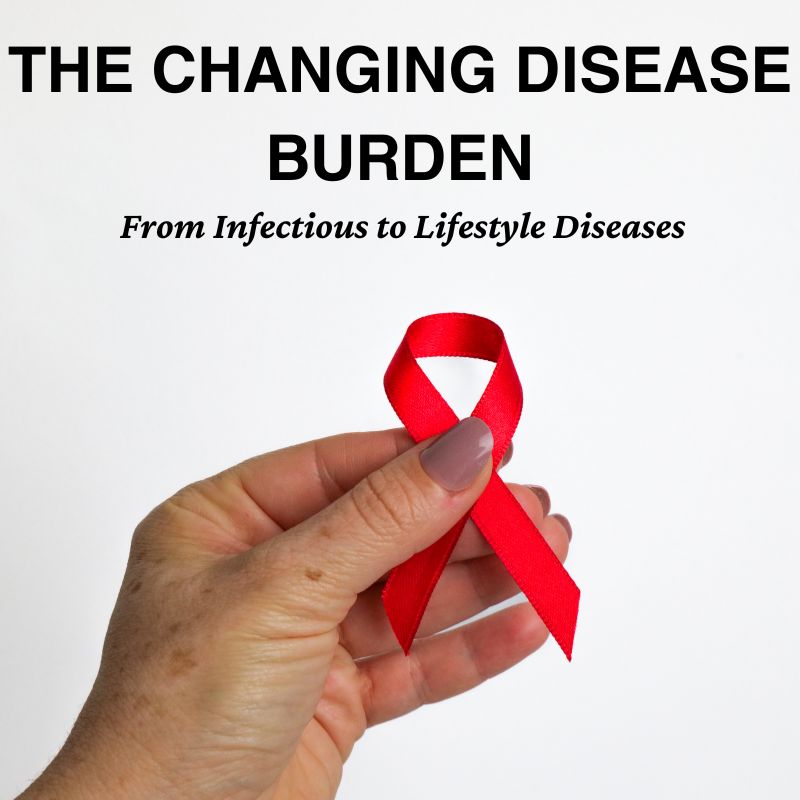In today’s fast-paced world, changes in work patterns, diet, and daily habits have led to a dramatic shift in global health. Modern lifestyle diseases, once considered rare, are now increasingly common across all age groups. These diseases often linked to sedentary behavior, poor nutrition, and stress pose significant health, economic, and social challenges. Understanding these conditions and adopting effective prevention strategies is essential for maintaining overall well-being.
The Changing Disease Burden: From Infectious to Lifestyle Diseases

Historically, infectious diseases were the leading cause of illness and death worldwide. However, with advancements in medicine, sanitation, and vaccination, lifestyle diseases such as heart disease, diabetes, and obesity have become the dominant health concern. Factors driving this change include prolonged screen time, lack of physical activity, high-calorie diets, and chronic stress. Recognizing this shift is critical for individuals and healthcare systems to prioritize prevention and early intervention.
Major Modern Lifestyle Diseases and Their Determinants
Cardiovascular Diseases
Cardiovascular diseases (CVDs) are among the leading causes of death globally. Poor lifestyle habits such as a diet high in saturated fats, smoking, excessive alcohol consumption, and lack of exercise increase the risk of heart attacks, strokes, and hypertension. Prevention focuses on maintaining a balanced diet, engaging in regular physical activity, and managing blood pressure and cholesterol levels.
Diabetes
Type 2 diabetes has become a major public health concern due to sedentary lifestyles and unhealthy eating habits. Risk factors include obesity, genetic predisposition, and high sugar consumption. Preventive measures involve monitoring blood sugar levels, following a nutritious diet, staying physically active, and maintaining a healthy weight.
Obesity
Obesity is a widespread lifestyle disease affecting all age groups. It significantly increases the risk of heart disease, diabetes, and certain cancers. Causes include overconsumption of calorie-dense foods, sugary beverages, and insufficient physical activity. Preventing obesity requires a combination of balanced nutrition, portion control, and regular exercise.
Cancer
Certain cancers, including colorectal, breast, and lung cancers, are strongly influenced by lifestyle choices. Risk factors include smoking, alcohol consumption, poor diet, and lack of physical activity. Preventive strategies involve adopting a healthy diet rich in fruits and vegetables, regular exercise, avoiding tobacco and excessive alcohol, and undergoing routine screenings.
Mental Health Disorders
Modern lifestyles also contribute to mental health issues such as depression, anxiety, and chronic stress. Sedentary routines, social isolation, and work-related pressure exacerbate these conditions. Prevention includes mindfulness practices, regular physical activity, social engagement, adequate sleep, and seeking professional support when necessary.
Economic and Social Impacts of Lifestyle Diseases
Lifestyle diseases impose a heavy economic burden due to rising healthcare costs, medication expenses, and lost productivity. Societally, these conditions affect quality of life, reduce workforce efficiency, and increase dependency on healthcare systems. Addressing lifestyle diseases early not only improves individual health but also reduces economic and social strain.
Global Trends and Patterns of Lifestyle Diseases
Lifestyle diseases are no longer confined to high-income countries; they are rapidly increasing in developing nations due to urbanization and changing diets. Obesity and diabetes rates are rising among children and young adults, highlighting the urgent need for early prevention. Global health organizations emphasize the importance of awareness campaigns, nutrition education, and community-based interventions.
Prevention and Control Strategies
Effective prevention of modern lifestyle diseases requires a holistic approach:
- Balanced Diet and Nutrition: Prioritize fruits, vegetables, whole grains, lean proteins, and healthy fats while limiting processed foods, sugary drinks, and excessive salt.
- Regular Physical Activity: Engage in at least 150 minutes of moderate aerobic exercise or 75 minutes of vigorous exercise per week, along with strength training.
- Stress Management: Practice mindfulness, meditation, yoga, or other relaxation techniques to reduce chronic stress.
- Routine Medical Checkups: Early detection through regular screenings for blood pressure, cholesterol, blood sugar, and cancer improves outcomes.
- Education and Awareness: Public health campaigns, workplace wellness programs, and school initiatives help promote healthy lifestyle habits.
A Call for Global Action
Combating lifestyle diseases requires coordinated efforts at individual, community, and governmental levels. Policymakers should implement programs that encourage healthy living, such as safe recreational spaces, nutritional labeling, and taxation on unhealthy foods. Healthcare providers must educate patients and promote preventive care. Communities can support social activities and health education, while individuals must take personal responsibility for their well-being.
Conclusion
Modern lifestyle diseases are a growing global health concern with significant economic and social impacts. Fortunately, most of these conditions are preventable through simple lifestyle modifications. By adopting a balanced diet, staying physically active, managing stress, and seeking regular medical care, individuals can reduce their risk and improve overall quality of life. Collective action by governments, healthcare systems, and communities is essential to create environments that support healthy living and prevent the rise of lifestyle-related diseases.

